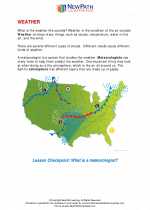What is the Silurian Period?
The Silurian period is a division of geological time that occurred between the end of the Ordovician period and the beginning of the Devonian period. It is named after the ancient Celtic tribe of the Silures in Wales, where rocks from this period were first studied.
Geological Events
During the Silurian period, the Earth's climate was relatively stable, with warm temperatures and high sea levels. The period saw the continued movement of tectonic plates and the formation of mountain ranges, such as the Caledonian Orogeny in present-day Scotland and Scandinavia.
Biological Evolution
The Silurian period marked a significant diversification of marine life. Early fish-like vertebrates, such as the jawless fish, began to appear in the oceans. The first coral reefs also emerged during this time, contributing to the development of diverse marine ecosystems.
Study Guide Questions
- What major geological events occurred during the Silurian period? (10 points)
- How did the climate during the Silurian period contribute to the evolution of life forms? (15 points)
- Describe the significance of the appearance of early fish-like vertebrates in the Silurian oceans. (20 points)
Answers
- The major geological events during the Silurian period include the formation of mountain ranges through tectonic plate movement, such as the Caledonian Orogeny. The period also saw stable climate conditions and high sea levels.
- The warm and stable climate during the Silurian period provided an ideal environment for the development and diversification of marine life forms. High sea levels also led to the formation of diverse marine ecosystems and the emergence of coral reefs.
- The appearance of early fish-like vertebrates in the Silurian oceans marked an important step in the evolution of vertebrate life. These primitive fish laid the foundation for the later diversification and adaptation of vertebrate species, ultimately leading to the emergence of more complex aquatic and terrestrial vertebrates.
[Silurian] Related Worksheets and Study Guides:
.◂Science Worksheets and Study Guides Third Grade. Weather

 Worksheet/Answer key
Worksheet/Answer key
 Worksheet/Answer key
Worksheet/Answer key
 Worksheet/Answer key
Worksheet/Answer key
 Vocabulary/Answer key
Vocabulary/Answer key
 Vocabulary/Answer key
Vocabulary/Answer key
